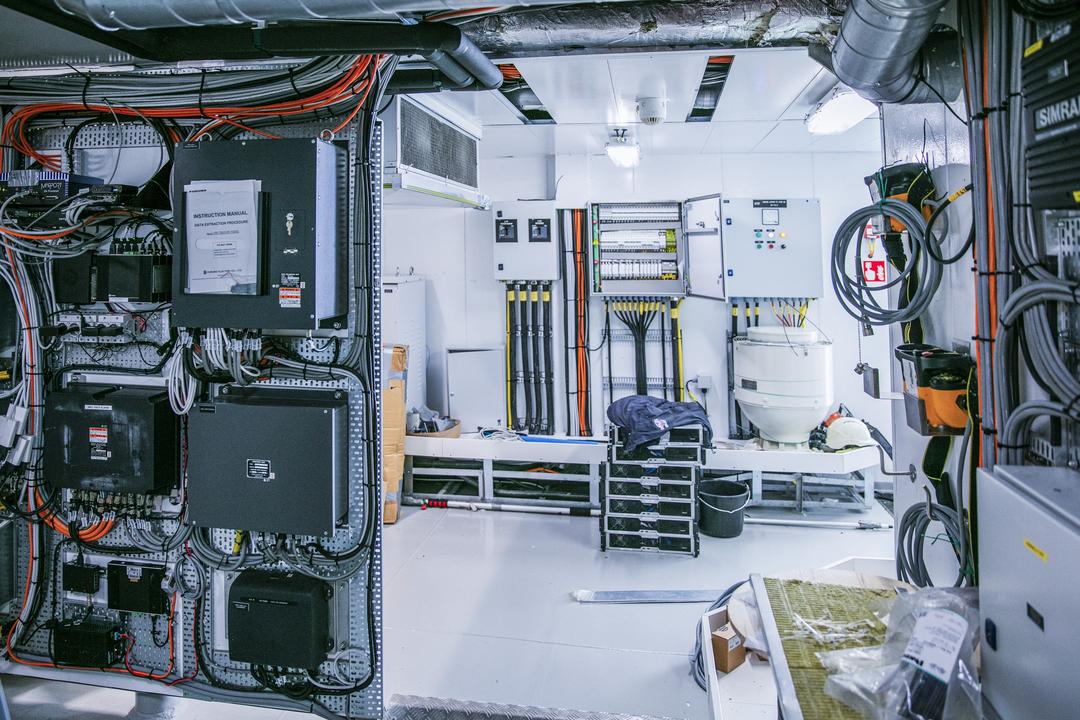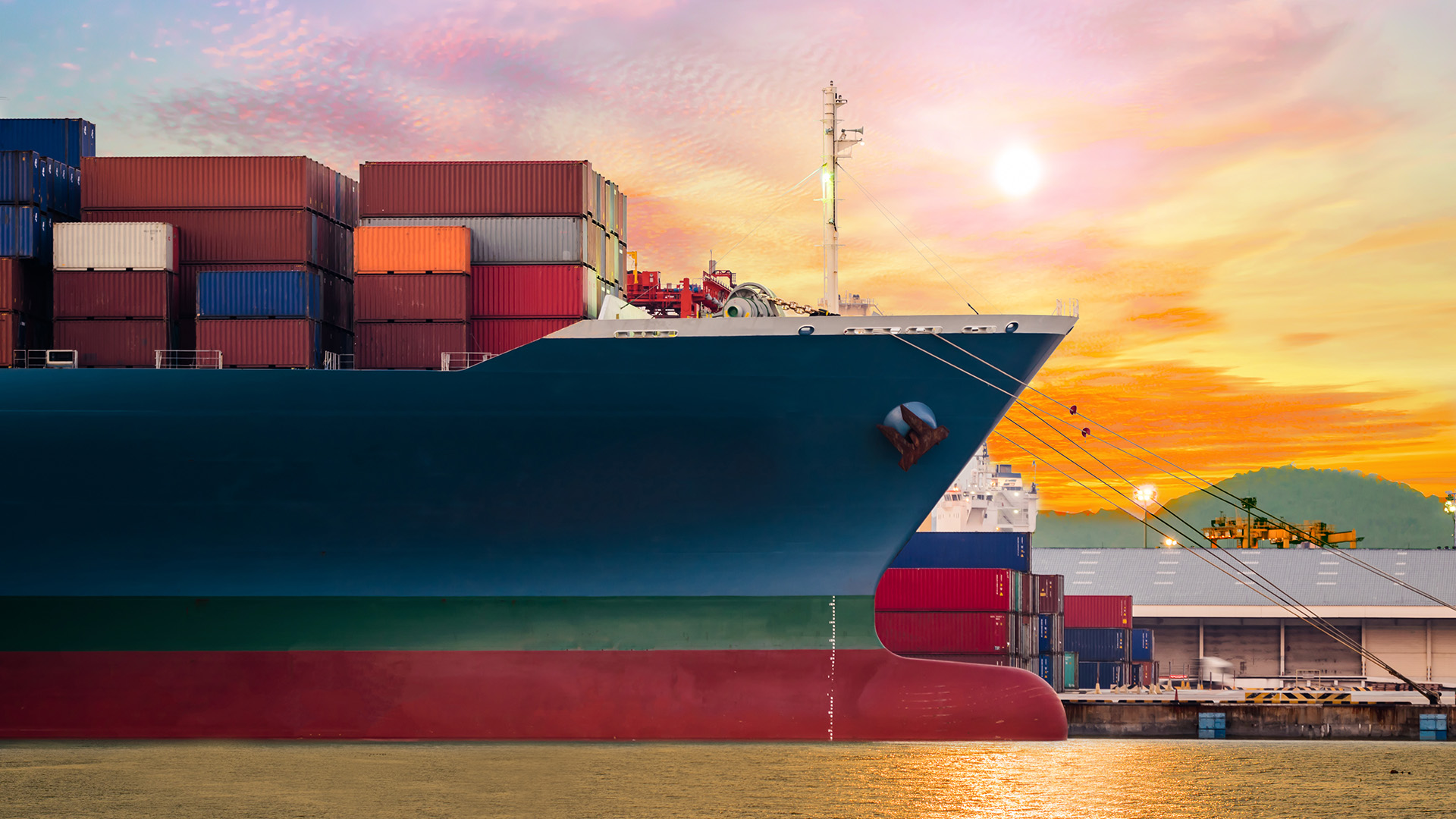What if real-time vessel data could unlock new levels of efficiency and control at sea?
The maritime industry is moving fast, and while cloud-based systems are now commonly adopted, they still fall short when it comes to delivering instant, onboard insights. Edge computing changes this by processing data directly on board, where every second counts.
This article explains how edge computing, from sensor fusion to edge AI, transforms shipboard systems. You’ll learn how faster, smarter data processing lowers latency, supports crew decisions, and drives real operational impact across your fleet.
What is edge computing for real-time vessel data processing in maritime shipping?
Edge computing for real-time vessel data processing is a practical way to handle vast flows of maritime data directly onboard ships, where it's created and needed most. Instead of sending every data stream back to distant cloud centers, edge AI and local data processing nodes take immediate action on information from vessel onboard sensors. These nodes, part of a distributed architecture, support live analytics that empower both shipboard systems and shore teams with instant insights.
By keeping analytics and automation close to ship operations, latency reduction becomes a given. Decisions about engine performance, navigation, or emissions monitoring surface in the moment, not minutes or hours later. This speed is crucial when navigating changing sea conditions or responding to compliance requirements.
What does edge computing look like onboard a modern vessel?
On modern ships, edge devices act as the vessel’s brain. They collect maritime data streams from hundreds of interconnected sensors (monitoring engines, fuel flow, or environmental conditions) and process them locally. Danelec Edge is an example: scalable, quick to deploy, and designed for continuous operations without relying on satellite connections. This ensures uptime for critical apps, supports live analytics for crew, and provides remote-first management with no need for daily intervention onboard.
How does edge computing improve the speed and reliability of data processing compared to traditional methods?
Traditional methods send raw shipboard data to the cloud. The process is slow, depends on expensive bandwidth, and introduces risk if communication links fail. With edge computing, you achieve:
- Immediate data processing that supports real-time analytics and operational efficiency.
- Uninterrupted uptime and system redundancy, delivered by a triple-server solution with integrated UPS.
- Continuous digital operations for vital functions (emissions compliance, vessel performance monitoring, and maritime IoT applications), all run securely onboard even during connectivity outages.
These advances let shipping professionals make faster, more informed decisions, cutting through the complexity of fragmented or delayed analytics.
What role do onboard sensors and edge devices play in real-time vessel operations?
Onboard sensors are the eyes and ears of the modern vessel. They capture everything, from fuel consumption to hull stress, enabling real-time data flows invaluable for data-driven decisions. Edge devices take over from there, using edge AI for sensor fusion(combining inputs for a more complete, accurate picture of shipboard conditions).
This setup means crews and managers receive timely, actionable intelligence without sifting through overwhelming logs or waiting for shore-side feedback. Maritime IoT, digitalization, and cybersecurity protections are seamlessly integrated, so vessel operators always have the right information at the right time.
By placing robust edge nodes like Danelec Edge at the center of shipboard systems, you future-proof your fleet for growing digital demands and new regulatory pressures, ensuring the maritime sector stays responsive, secure, and efficient.
How does edge computing enable sustainable energy optimization and regulatory compliance at sea?
Edge computing brings vessel performance monitoring and real-time analytics directly onboard, driving energy optimization and compliance from the engine room to the bridge. In maritime shipping, this approach empowers vessel energy management systems to process live data locally, minimizing delays and removing dependence on unstable satellite links.
By embedding fuel consumption analytics, emissions monitoring, and optimization algorithms right where the action happens, ships achieve instant feedback. This creates a continuous loop: data is gathered, analyzed, and acted on without waiting for data to reach shore. The result is operations that are always responsive and aligned with environmental regulations.
How does real-time data processing onboard help ships minimize energy use and emissions?
Real-time processing unlocks immediate insight for shipping professionals. When every engine tick or weather shift is logged and assessed by onboard digital systems, ships can:
- Adjust propulsion and speed to match optimal energy profiles
- Trigger emissions monitoring if fuel thresholds are exceeded
- Align energy management systems with current voyage conditions, not outdated reports
This means fuel is burned efficiently, and emissions stay within IMO and EU boundaries, leading to measurable OPEX reductions. For example, Danelec Edge acts as a private, onboard digital backbone, it supports continuous data flow, even during connectivity loss, ensuring critical optimization algorithms and compliance reporting tools never lag behind shipboard realities.
In what ways does edge computing simplify compliance with maritime regulations?
Edge computing makes compliance reporting precise and stress-free. Processing regulatory data at the source means emissions performance, fuel consumption, and voyage parameters are verified in real time, no more chasing logs or filling gaps after the fact.
Key advantages include:
- Automated generation of compliance reports (EU MRV, IMO DCS) from live vessel data
- Immediate detection of non-compliance and alerts, supporting proactive action
- Reliable archival of emissions monitoring records, fully protected by robust cybersecurity protocols
With fully remote management as found in Danelec Edge, onboard intervention is minimized. Regulatory teams and technical managers on shore get uninterrupted access to compliance reporting tools, reducing workload and de-risking audits.
What business value does outcome-based energy optimization deliver to ship operators?
Outcome-based optimization turns data into bottom-line results. By leveraging a combination of vessel energy management, predictive analytics, and continuous monitoring, operators unlock:
- Lower fuel spend through targeted efficiency improvements
- Reduced emissions output and a stronger stance in carbon-sensitive markets
- Assurance that every voyage meets the next benchmark in international environmental regulations
This forward-looking strategy future-proofs the fleet. The Danelec Edge platform’s triple-server reliability assures these outcomes remain consistent, with zero unplanned downtime, no matter how digital demands evolve onboard.
By embracing edge-driven, data-centric operations, maritime professionals gain the clarity and control to lead confidently into a cleaner era.
What are the practical steps and challenges for implementing edge computing on maritime vessels?
Rolling out edge computing for real-time vessel data processing in the maritime shipping industry is an achievable goal, but it requires deliberate choices and focused execution. This journey involves both technical upgrades and building new competencies within your teams.
Essential Steps for Deploying Edge Computing at Sea
Adopting vessel edge infrastructure starts with clear planning. The following steps support successful implementation:
- Upgrade the onboard infrastructure: Install rugged, scalable appliances that deliver reliable processing and application hosting. Systems like Danelec Edge can be deployed by the crew in minutes and ensure uptime with features like triple-server redundancy and UPS-supported failover.
- Integrate with existing onboard systems: Seamless system integration is essential. Map all legacy and new devices for data flows, ensuring compatibility between operational technology, IoT hardware, and the central shipboard server.
- Establish robust cybersecurity protocols: Secure digital operations by deploying advanced firewalls and endpoint defenses, segmenting critical networks, and applying regular security updates. The unique maritime environment demands strong measures against cyber risks, especially as edge environments expand the attack perimeter.
- Enable remote monitoring and management: Use solutions that support remote configuration, troubleshooting, and software updates from shore. This approach minimizes operational disruptions and allows for rapid response, key for large fleets with distributed operations.
- Commit to ongoing crew training: Equip onboard staff with the digital skills needed to operate new systems, monitor status dashboards, and follow security best practices. Upskilling the crew reduces reliance on shore-based intervention and empowers safe, efficient digitalization.
Key Challenges and How to Address Them
Edge-enabled onboard digitalization comes with its own set of hurdles:
- Complexity of integrating legacy systems: Many ships run older tech with limited connectivity. Use middleware solutions and phased rollouts to bridge the gap between existing sensors, control modules, and new edge devices.
- Ensuring cybersecurity for all endpoints: Larger attack surfaces increase risk. Maritime IT managers must define strict access controls, monitor for anomalies, and train crew to spot and report suspicious activity. The built-in cybersecurity features of Danelec Edge are designed to support this process at scale.
- Operational change management: Introducing new technology requires clear communication and stakeholder buy-in. Explain the value of real-time analytics, vessel performance monitoring, and operational efficiency to overcome resistance. Use training sessions and visible performance improvements to build momentum.
- Scaling to fleet level: Each vessel may have unique requirements for system integration and connectivity. Opt for modular, fleet-wide solutions that allow continuous deployment and iterative development such as the full Kubernetes private cloud architecture offered by Danelec Edge.
Infrastructure and Human Skills Required
- Reliable onboard IT hardware able to withstand marine conditions and support scalable application hosting.
- Proficient crew trained in basic digital troubleshooting and secure system operations.
- Comprehensive remote management capability, so fleets are never left blind due to connectivity issues.
- Ongoing collaboration between onboard staff and shore teams for shared situational awareness and response.
By combining strong technical architecture with informed, digitally skilled crews, shipping companies can confidently realize the benefits of real-time analytics, energy optimization, and data-driven decisions(without adding unnecessary complexity).
Conclusion
Looking back at how edge computing transforms real-time vessel data processing, it’s clear that this technology is reshaping maritime operations by bringing processing power directly onboard. By fusing sensor data within a distributed architecture, edge AI enables faster, more reliable decision-making without depending on shore-based centers. This reduces latency and boosts responsiveness, critical for navigating today’s complex maritime environment.
The true significance lies in how edge computing supports sustainability goals and regulatory compliance. Real-time fuel consumption analytics and emissions monitoring empower crews to optimize energy use and stay ahead of evolving standards. This outcome-based optimization not only cuts costs but also strengthens environmental stewardship across fleets.
Implementing edge solutions isn’t without challenges. It demands robust onboard infrastructure, strong cybersecurity protocols, seamless integration with existing systems, and ongoing crew training. Yet, these hurdles are opportunities to build resilience and unlock new operational capabilities.
Adopting edge computing is more than a technological upgrade, it’s a strategic shift that equips ship operators to make smarter, timely decisions and drive lasting improvements. As we look forward, I invite you to consider: how can edge computing reshape your vessel operations to navigate the future with confidence and agility? After all, the power of data at the edge is the tide pushing maritime efficiency forward.




